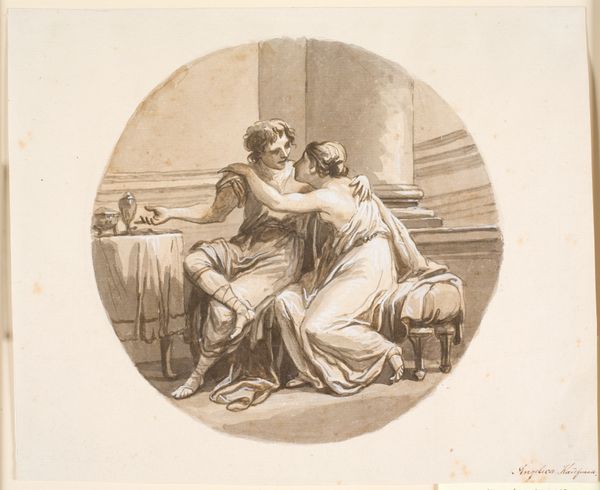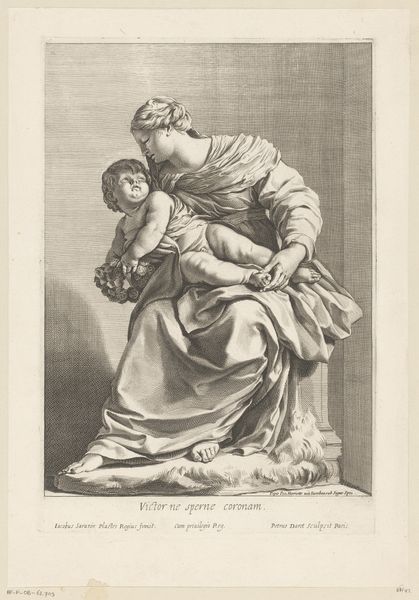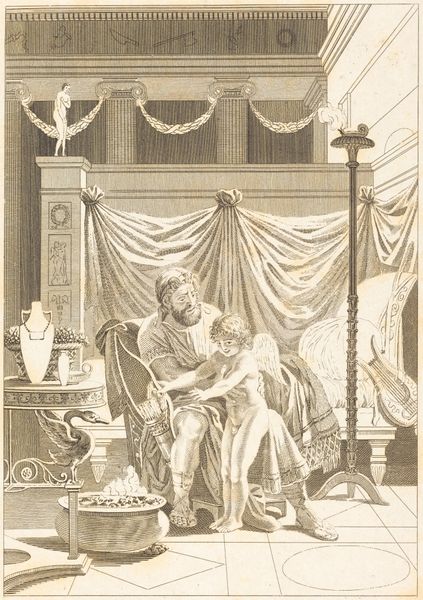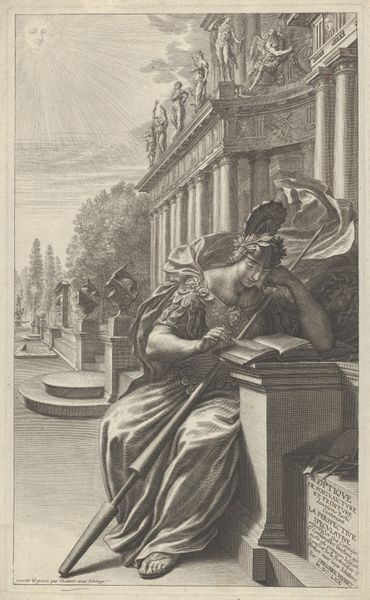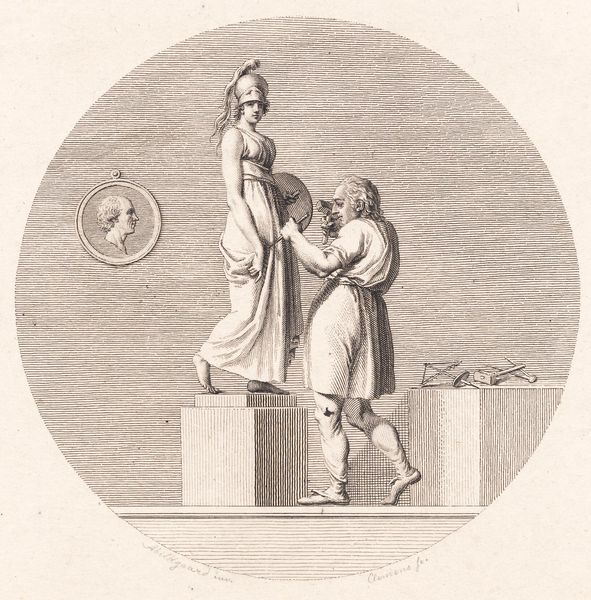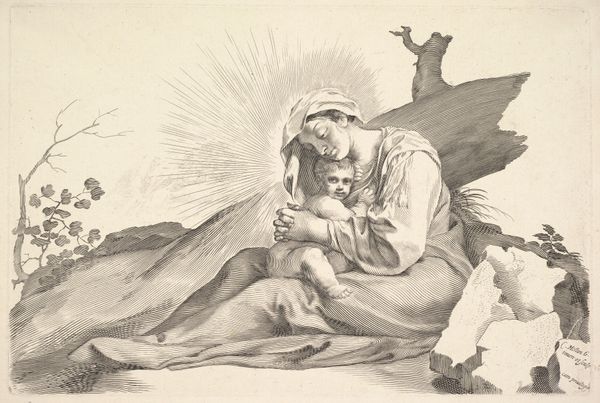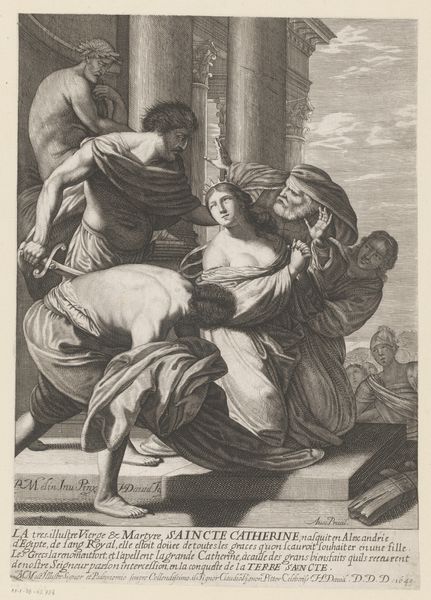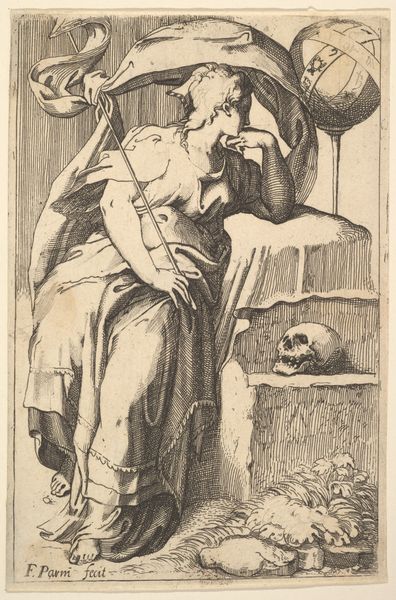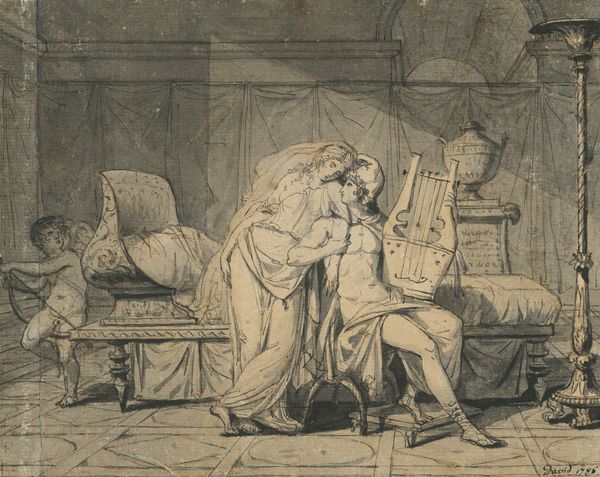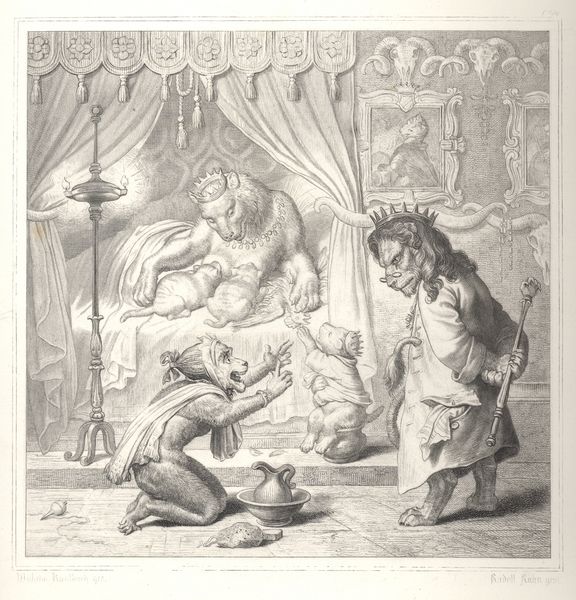
drawing, print, engraving
#
portrait
#
drawing
#
allegory
#
baroque
# print
#
figuration
#
form
#
men
#
line
#
portrait drawing
#
history-painting
#
engraving
Dimensions: sheet: 9 7/8 x 14 1/8 in. (25.1 x 35.9 cm)
Copyright: Public Domain
Editor: We’re looking at Claude Mellan’s “Allegory in Honor of Anne of Austria,” made between 1638 and 1648. It's an engraving currently held at the Metropolitan Museum of Art. The somber mood and intricate lines really strike me. The urn in the background feels quite imposing. What do you see as the most important elements of this piece? Curator: Observe how Mellan uses line – and line alone – to construct the entire composition. Notice the meticulous gradations of tone, achieved solely through variations in the thickness and density of the engraved lines. The linear patterns create a sense of depth and texture. Where does your eye go first, and why? Editor: I think I'm drawn to the figure and the portrait she is holding...the Queen herself, presumably. It almost feels like a painting within a painting, the circular frame drawing more focus to her image. The clean strokes really highlight her features and ornate embellishments in her crown and clothing. How would this contrast contribute to the piece's interpretation? Curator: The contrast emphasizes the artifice inherent in portraiture. By presenting Anne within a frame held by a symbolic figure, Mellan is drawing attention to the constructed nature of representation. Do you notice the other framed images and trees to either side of the Queen? Editor: Yes, they provide a visual context. What is their relation to the central scene and how can we interpret Mellan’s intentions using them? Curator: Note how these supporting formal and structural details build the artwork as a tribute, imbuing its graphic nature with more historical and sentimental weight. A singular feat in monochromatic balance and control. Editor: Thank you! I had initially approached it with such a straightforward view but your points concerning structural balance provide new insights. Curator: And I have found renewed admiration in considering your read of the central figures, whose importance in the structure may go unnoticed otherwise.
Comments
No comments
Be the first to comment and join the conversation on the ultimate creative platform.
